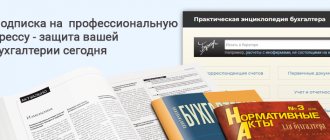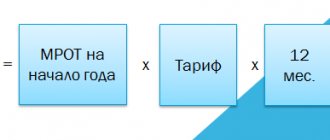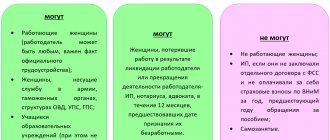What is Unified Agricultural Tax in taxation?
The Unified Agricultural Tax (USAT) is a special tax regime that is intended for organizations and entrepreneurs producing agricultural products. Working on it exempts organizations from paying:
- income tax (with the exception of income from dividends and transactions with certain types of debt obligations);
- property tax in respect of property that the organization uses for the production, processing and sale of agricultural products, as well as for the provision of services to agricultural producers.
Individual entrepreneurs working for the Unified Agricultural Tax do not pay:
- Personal income tax on income from business activities (with the exception of income from dividends and income taxed at rates of 35 and 9 percent (the full list can be found in paragraphs 2, 5 of Article 224 of the Tax Code of the Russian Federation);
- property tax for individuals in relation to property used for the production, processing and sale of agricultural products.
Until January 1, 2019, individuals and legal entities working for the Unified Agricultural Tax were exempt from paying VAT. Amendments introduced by the Law “On Amendments to Parts One and Two of the Tax Code of the Russian Federation” dated November 27, 2017 No. 335-FZ, this relaxation was cancelled.
Payers of the Unified Agricultural Tax have the right to be exempt from VAT in 2022 if one of the following conditions is met (clause 1 of Article 145 of the Tax Code of the Russian Federation):
- the transition to the Unified Agricultural Tax and the exercise of the right to exemption occur within one calendar year;
- the amount of income from activities in respect of which the Unified Agricultural Tax is applied for 2022 did not exceed 80 million rubles (later this amount was reduced to 70 million rubles for 2022 and 60 million rubles for 2022 and subsequent years).
To obtain the right to an exemption, you must submit a notification and supporting documents to the tax office before the 20th day of the month from which the exemption will be valid. The notification form was approved by Order of the Ministry of Finance of the Russian Federation dated December 26, 2018 No. 286n. Organizations and entrepreneurs who have received an exemption cannot refuse it in the future.
What are the benefits of using unified agricultural tax?
To understand why it is more profitable to use the Unified Agricultural Tax, let us compare the tax base and tax rate of different taxation regimes.
| Element of the tax system | Unified agricultural tax | BASIC | USN Income | USN Income minus expenses |
| The tax base | Monetary value of income reduced by expenses | Monetary expression of profit, that is, the difference between income and expenses | Monetary expression of income | Monetary value of income reduced by expenses |
| Tax rate | 6% | 20% (in general) | 6% | From 5% to 15% (depending on the size of the differentiated rate accepted in the region) |
The tax rate for the Unified Agricultural Tax and the simplified tax system for Income is the same, but the tax base for the simplified tax system for Income is larger, since it does not include expenses incurred. This means the amount of tax payable will be higher.
In terms of tax burden, the Unified Agricultural Tax is comparable only to the simplified taxation system Income minus expenses (subject to the minimum possible rate of 5%, which is not applied in all regions). But now agricultural tax payers are required to pay VAT. Exception: if the agricultural producer’s income in 2022 does not exceed 60 million rubles.
How does the Unified Agricultural Tax differ from the simplified tax system?
The Unified Agricultural Tax, like the simplified taxation system (STS), is a special regime, the use of which exempts you from paying certain taxes. However, there are many differences between them:
- unlike the simplified tax system, payers of the unified agricultural tax are not exempt from paying VAT;
- Only producers of agricultural products can work for the Unified Agricultural Tax, provided that the share from such activities is at least 70 percent of their total income. There is no specific list of types of activities established for payers of the simplified tax system. There are a number of companies that are prohibited from switching to this special regime, in particular, banks, organizations with branches, and so on (clause 3 of Article 346.12 of the Tax Code of the Russian Federation);
- For some categories of Unified Agricultural Tax payers—fishing artels and fishery organizations—additional restrictions have been established. They must work on fishing fleet vessels owned by them or under a charter agreement. In addition, the average number of fishery organizations should not exceed 300 employees. The simplified tax system has different rules for everyone who applies this special regime. There should not be more than 130 employees, income should not exceed 200 million rubles, and the share of participation of other organizations should be 25%;
- Unlike the simplified tax system, payers of the unified agricultural tax cannot choose the object of taxation. For them it is the same - “Income minus expenses.” On the simplified tax system, there is a choice between the objects “Income” and “Income minus expenses”;
- for the unified agricultural tax, it is necessary to pay an advance payment at the end of the half-year and a tax at the end of the year, and for the simplified tax system, an advance payment is made quarterly. At the same time, there is no need to submit advance payments in both special modes.
Who can apply the Unified Agricultural Tax
There are several categories of taxpayers who can apply the Unified Agricultural Tax.
Firstly, organizations and individual entrepreneurs that directly produce, process and sell agricultural products. Income from such activities, as well as from the provision of services to agricultural producers, must be at least 70 percent of their total income. Agricultural products include livestock products, agricultural and forestry crop production.
The full list can be found in Decree of the Government of the Russian Federation dated July 25, 2006 No. 458.
Secondly, companies and individual entrepreneurs that provide services to agricultural producers , in particular, services:
- on field preparation;
- for sowing and growing grain and fruit crops;
- for pruning fruit trees;
- for driving and grazing livestock and so on.
The share of income from such activities must also be at least 70% of total income.
Thirdly, agricultural consumer cooperatives, including livestock, supply, crop and others . The income rule also applies to them.
Fourthly, agricultural production cooperatives , including fishing cooperatives that carry out fishing on fishing fleet vessels owned by them by right of ownership or on the basis of a charter agreement. The share from the sale of catch and fish products of own production must be 70 percent or more.
Fifthly, fishing organizations and individual entrepreneurs that meet the requirements established for fishing cooperatives . In addition, their average number of employees should not exceed 300 employees.
The following cannot be used in special mode:
- companies and individual entrepreneurs producing excisable goods (with the exception of excisable grapes, wine, wine materials of their own production);
- budgetary, autonomous and government institutions;
- companies organizing and conducting gambling.
How to switch to Unified Agricultural Tax
A company or individual entrepreneur wishing to switch to the unified agricultural tax must submit a notification to the tax office before December 31 of the year preceding the year in which the transition will be made. The document must indicate the share of income from the sale of agricultural products. The notification form was approved by Order of the Federal Tax Service of the Russian Federation dated January 28, 2013 No. ММВ-7-3/ [email protected]
The document can be:
- send by mail in a valuable letter with a list of the contents;
- bring it to the inspection in person;
- send in electronic form through the taxpayer’s account.
A newly created company or a newly registered entrepreneur can notify the Federal Tax Service within 30 days from the date of tax registration (Clause 2 of Article 346.3 of the Tax Code of the Russian Federation). If you miss this deadline, you will have to work on the general tax system until the end of the year.
Individual entrepreneurs who have lost the right to pay tax on professional income must notify of the transition to the unified agricultural tax within 20 days from the date of deregistration as self-employed. (Clause 6, Article 15 of the Law “On conducting an experiment to establish a special tax regime “Tax on professional income” dated November 27, 2018 No. 422-FZ).
When to submit a declaration under the Unified Agricultural Tax
The Unified Agricultural Tax declaration must be submitted once at the end of the tax period, which is a year. You do not need to submit anything during the year. Unified agricultural tax payers submit a declaration to the tax office at their location no later than:
- March 31 of the year following the reporting year (the declaration for 2022 must be submitted by March 31, 2021);
- On the 25th day of the month following the month in which the organization or individual entrepreneur ceased its activities as an agricultural producer under clause 9 of Art. 346.3 Tax Code of the Russian Federation.
The document can be submitted:
- on paper, if the average number of employees for the year does not exceed 100 people (the declaration can be sent by mail or brought to the inspectorate in person);
- in electronic form (clause 3 of article 80 of the Tax Code of the Russian Federation).
For submitting documents on paper, those whose average number of employees exceeds 100 employees face a fine of 200 rubles (Article 119.1 of the Tax Code of the Russian Federation).
How to calculate tax
The object of taxation of the Unified Agricultural Tax is the difference between income and expenses . What exactly is included in income and expenses is defined in Article 346.5 of the Tax Code of the Russian Federation. Income is accounted for on a cash basis, that is, recognized on the day of receipt. Expenses - after actual payment. Income and expenses are summed up from the beginning of the year on an accrual basis.
reduce the tax base by its amount . The loss can be carried forward for 10 years.
When the tax base is calculated, a tax rate of 6% .
Paying tax
The tax period under the Unified Agricultural Tax is a calendar year, and the reporting period is a half-year. Based on the results of the six months, taxpayers must calculate the amount of the advance payment . The advance is paid within 25 days after the end of the reporting period, that is, until July 25 . At the end of the year, the total amount of the unified agricultural tax is calculated. It must be paid no later than March 31 of the year following the reporting year.
How to fill out the Unified Agricultural Tax declaration
The declaration form for the unified agricultural tax was approved by Order of the Federal Tax Service of the Russian Federation dated July 28, 2014 No. ММВ-7-3/ [email protected] The document will be valid from March 29, 2021 in an updated form (Order of the Federal Tax Service of the Russian Federation dated December 18, 2020 No. ED-7-3/ [email protected] ). In the period from 03/29/2021 to 03/31/2021, you can submit a declaration using both the old and new forms (letter of the Federal Tax Service of the Russian Federation dated 02/12/2021 No. SD-4-3 / [email protected] ).
The document consists of a title page and four sections.
On the title page you must indicate:
- taxpayer data (name, tax identification number, checkpoint);
- correction number, when submitting the primary declaration, you should enter “0”;
- tax period “34” - calendar year;
- year for which reporting is submitted (2020);
- tax office code.
In section 1 we indicate:
- in lines 001 and 003 - OKTMO code, in line 001 the code is entered by all taxpayers, in line 003 - only those who have changed their location;
- in line 002 - the amount of the advance payment;
- in line 004 - the amount that must be paid at the end of the year, taking into account the advance;
- in line 005 - the amount of tax to be reduced if the amount of the advance exceeded the amount of tax calculated for the year.
In section 2 we write:
- in line 010 - income received, we take their amount from the book of income and expenses, the form of which is approved by Order of the Ministry of Finance of the Russian Federation dated December 11, 2006 No. 169n;
- in line 020 - expenses incurred;
- in line 030 - the tax base for the tax (we subtract expenses from income), if the difference is negative, the tax base is zero;
- in line 040 - the amount of losses from previous years by which the tax base was reduced;
- in line 045 - tax rate;
- in line 050 - the amount of tax for the year (we reduce the tax base by the amount of losses from previous years and multiply by the tax rate).
Section 2.1 is completed only by those who have losses from previous years. The resulting losses can be taken into account when calculating taxes for 10 years.
Section 3 is issued only by taxpayers who received funds, as well as other property, as part of targeted financing or charitable activities.
Results
The deadline for paying the unified agricultural tax at the end of the year coincides with the deadline for filing a declaration for this tax and is defined as March 31. For reporting for 2022, this deadline falls exactly on the date established by the Tax Code of the Russian Federation - 03/31/2022.
Accounting for losses from previous years under the Unified Agricultural Tax is a permitted operation, limited in duration to 10 years. The amount of loss taken into account at a time is not limited.
Sources: Tax Code of the Russian Federation
You can find more complete information on the topic in ConsultantPlus. Free trial access to the system for 2 days.
What is included in the costs of the unified agricultural tax?
When calculating the tax base, the amount of expenses incurred is subtracted from the amount of income received. The list of expenses exceeds 40 items (clause 2 of Article 346.5 of the Tax Code of the Russian Federation). It includes, in particular, expenses:
- for the purchase and production of fixed assets, their reconstruction, modernization;
- for wages and sick leave;
- for the payment of mandatory insurance premiums and contributions for certain types of voluntary insurance;
- on business trips;
- for communication services and so on.
The expenses of the Unified Agricultural Tax payer must be (clause 3, clause 2, clause 5, Article 346.5 of the Tax Code of the Russian Federation):
- justified, that is, economically justified and expressed in monetary terms;
- confirmed documents drawn up in accordance with the law or business customs;
- paid.
Reporting of peasant farms under the Unified Agricultural Tax: reporting forms for extra-budgetary funds
If a peasant farm does not have employees, then its interaction with extra-budgetary funds is carried out in the manner that determines interaction with the corresponding funds of individual entrepreneurs. That is, there is no need to report to the Pension Fund. At the same time, individual entrepreneurs on the Unified Agricultural Tax must pay insurance premiums in a fixed amount.
If a peasant farm has employees, then the farm will have to report:
1. Before the Pension Fund, providing:
- form SZV-M - monthly (until the 15th day of the month following the reporting month);
- form SZV-TD - monthly until the 15th of the previous reporting period.
2. Before the Social Insurance Fund, submitting form 4-FSS to the fund - based on the results of each quarter by the 20th day of the month following the reporting period on paper. If a peasant farm employs more than 25 people, then its reporting to the Social Insurance Fund must be submitted via electronic communication channels. However, it can be submitted 5 days later than the paper version of the report is submitted.
The activities of peasant farms at the unified agricultural system are regulated by a large number of regulations. In order not to miss anything important, get free trial access to the system and watch the expert’s explanations on the creation, operation and taxation of peasant farms.
How to calculate the Unified Agricultural Tax tax
The tax amount should be calculated using the formula: tax base multiplied by the tax rate. As we found out earlier, to determine the tax base, expenses and losses of previous years are subtracted from income received.
The tax rate is 6 percent. Regions can establish differentiated rates from 01/01/2019 ranging from 0 to 6 percent, depending on:
- depending on the type of agricultural product;
- from the place of business;
- on the amount of income from the sale of agricultural products of own production;
- from the average number of employees.
For example, for agricultural producers in the Moscow region from 01/01/2019 to 12/31/2021 there is a zero tax rate (Law of the Moscow region “On establishing the rate of the unified agricultural tax in the territory of the Moscow region” dated 08/27/2018 No. 145/2018-OZ).
Example
IP Ivanov A.P. for the first half of 2022, received income in the amount of 3,879,500 rubles. Expenses amounted to 2,158,600 rubles. The advance payment amounted to (3,879,500 - 2,158,600) x 6 percent = 1,720,900 x 6 percent = 103,254 rubles.
In the second half of the year, income amounted to 1,460,200 rubles; expenses amounted to 1,350,000 rubles. The final tax amount will be: income for the years (3,879,500 1,460,200) - expenses for the year (2,158,600 1,350,000) x 6 percent = 5,339,700 - 3,508,600 x 6 percent = 109,866 rubles. Let's reduce the amount received by the amount of the advance paid: 109,866 - 103,254 = 6,612 rubles. Thus, at the end of 2022, the entrepreneur needs to pay 6,612 rubles.
Combination of Unified Agricultural Tax with other regimes
Before the abolition of the taxation system in the form of payment of a single tax on imputed income, payers of the unified agricultural tax could combine this special regime with the UTII. It is prohibited to combine it with the simplified tax system and OSNO. After the abolition of UTII from 2021, legal entities do not have the right to combine Unified Agricultural Tax with any other taxation system.
Individual entrepreneurs can combine the unified agricultural tax with the patent tax system. They must keep separate records of income and expenses for these special regimes. A seventy percent share of income from the sale of agricultural products must be calculated from income received under both taxation systems (letter of the Ministry of Finance of the Russian Federation dated October 17, 2011 No. 03-11-09/64).
Tax reporting
The agricultural tax system gives some tax freedom to single tax payers. Thus, the payer must submit a tax return only based on the results of the tax period (year) by March 31 of the year following the previous one.
If an agricultural enterprise or individual entrepreneur is late in submitting reports, they will be required to pay a fine in the amount of 5–30% of the tax amount, but not less than 1,000 rubles.
For information on the procedure for submitting reports under the simplified tax system, read the article “Procedure for submitting reports under the simplified tax system.”






